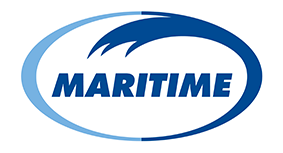Zero Emission HGV and Infrastructure Demonstrator
Posted 15th Sep

As the UK moves toward its 2050 net zero target, decarbonising HGVs presents one of the toughest - yet most critical
-challenges.
The Zero Emission HGV and Infrastructure Demonstrator (ZEHID) programme, backed by circa £200m in funding from the Department for Transport and delivered in partnership with Innovate UK, is rising to meet this challenge. Its aim is to deploy up to 370 battery-electric and hydrogen fuel cells vehicles across the country, and fund and support over 70 public and depot-based infrastructure installations by 2030.
ZEHID is being delivered in two phases:
Infrastructure delivery (2024–2026): Installing the charging and refuelling network to support commercial zero-emission
transport.
Vehicle deployment (2026–2031): Testing zero-emission HGVs in live, commercial settings, to assess how they perform under different operational demands.
Programme Objectives
ZEHID aims to demonstrate how electric and hydrogen-powered HGVs can be deployed effectively in day-to-day logistics, while providing the evidence needed to shape future investment and infrastructure planning.
Deploy Zero-Emission HGVs
Demonstrate the feasibility of battery-electric and hydrogen-powered trucks in real-world applications.
Build Confidence
Provide operators and policymakers with critical insights into the performance, infrastructure needs, and cost-effectiveness of these technologies.
Stimulate Innovation
Encourage the development of supply chain technologies and scalable solutions for the logistics sector.
Lay the Foundation
Establish the fuelling and charging infrastructure needed to support widespread adoption across the UK.
Our Involvement
Maritime is a lead partner in three of the programme’s four national projects, working closely with government, energy providers, and vehicle manufacturers to ensure zero-emission road transport works in real conditions.
Through ZEHID, Maritime ZERO will:
- Deploy BEVs into live operations and develop the charging infrastructure across our network to support them.
- Gather data to inform future investment, policy, and scale-up.
- Help shape a national blueprint for commercial zero-emission transport.

| ZenFreight
Led by: Dynamon A mixed-technology project deploying over 60 battery-electric and 16 hydrogen fuel cell HGVs across key transport
routes and operational cycles.
|

|
eFREIGHT 2030
Led by: Voltempo This project will deploy 100 electric HGVs and install 32 megawatt-capable charging sites.
|

|
Electric Freightway
Led by: GRIDSERVE This project will introduce up to 140 BEVs and 220 chargers – 70% of which will be publicly accessible.
|


